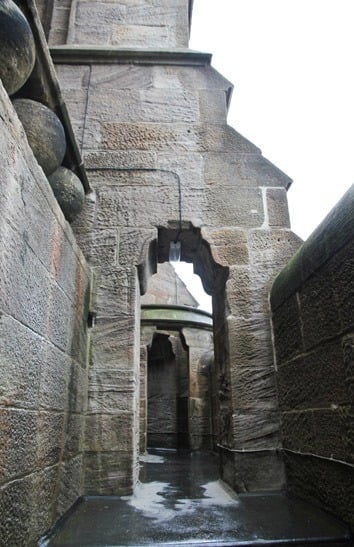The National Wallace Monument That Tells The Thrilling Story Of William Wallace, Patriot, Martyr, And Guardian Of Scotland
The National Wallace Monument is a towering tribute to Sir William Wallace, a 13th- and 14th-century Scottish hero.
It is perched majestically atop the Abbey Craig, a volcanic crag overlooking Stirling in Scotland.
This 67-meter (220-foot) Victorian Gothic structure, visible from miles around, is a symbol of Scotland’s enduring national pride and a testament to the man who fiercely defended his homeland against English rule.
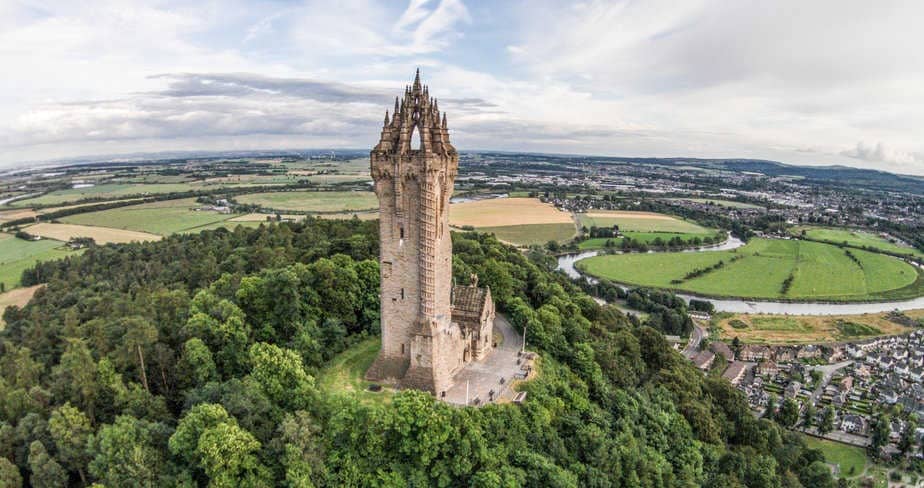
A Monument of National Pride
In the 19th century, Scots felt a strong sense of national pride and wanted to celebrate Wallace’s legacy.
In 1851, Reverend Charles Rogers and later William Burns led a campaign to raise money for a monument.
Contributions poured in from across Scotland and beyond, with notable donations from figures like Italian national leader Giuseppe Garibaldi.

Architect John Thomas Rochead was chosen to design the monument.
It combined two uniquely Scottish elements: the traditional Scottish tower house castle and a stone crown spire, similar to those atop St Giles’ Cathedral in Edinburgh and King’s College in Aberdeen.
The Duke of Atholl laid the foundation stone in 1861, and the monument was finished in 1869, costing £18,000 (about £1.8 million today).
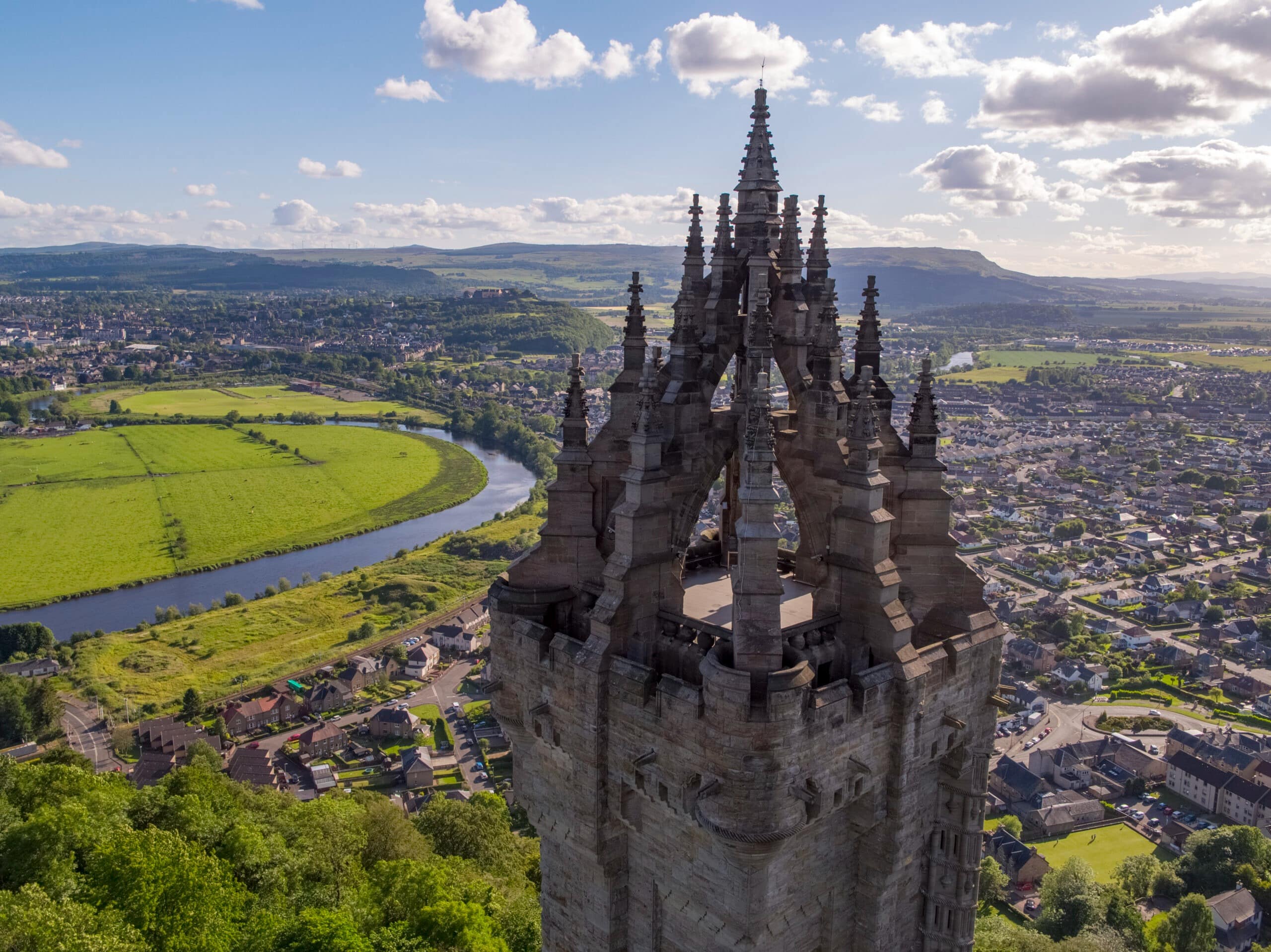
Why Abbey Craig?
Abbey Craig was chosen as the site for the monument due to its historical significance.
It overlooks the site of the Battle of Stirling Bridge, where Wallace achieved a legendary victory over the English on September 11, 1297.
From this vantage point, Wallace is said to have watched the gathering of King Edward I’s army, setting the stage for a pivotal moment in Scottish history.

Who was William Wallace?
William Wallace is one of Scotland’s most famous heroes, known for his role in the First War of Scottish Independence against England in the late 13th century.
His courage and strong desire for Scotland’s freedom have made him a symbol of national pride.
Wallace was born around 1270 in Elderslie, Renfrewshire.
He was the son of a minor landowner and likely received some education.
His fight against English rule began in 1296 when King Edward I of England invaded Scotland.
Wallace’s first big action was killing the English sheriff of Lanark in May 1297, which started a rebellion.
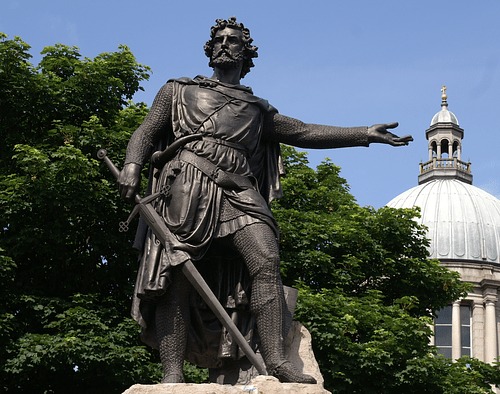
On September 11, 1297, Wallace and Andrew Moray led the Scottish forces to a significant victory at the Battle of Stirling Bridge.
This win raised Scottish spirits and made Wallace a well-known leader. He was knighted and became the Guardian of Scotland.
However, Wallace faced a major defeat at the Battle of Falkirk on July 22, 1298, against the English army.
This loss forced him to step down as Guardian, but he continued to support the fight for Scottish freedom.
In 1305, Wallace was captured and taken to London, where he was tried for treason and executed on August 23, 1305.
Wallace’s struggle for freedom has inspired many people and made him a symbol of resistance.
The 15th-century poet Blind Harry wrote an epic poem about Wallace called “The Acts and Deeds of Sir William Wallace.”
The 1995 film “Braveheart” also brought his story to a worldwide audience.
Today, the National Wallace Monument in Stirling honors his legacy and the respect people have for his bravery.
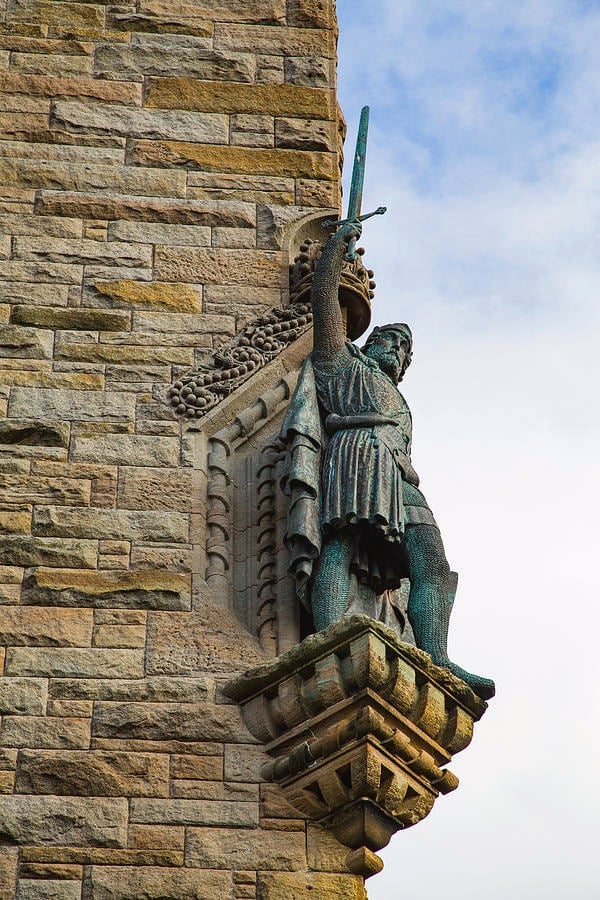
Visiting the Monument
The monument is open to visitors, who can climb 246 steps to reach the observation platform at the top.
Along the way, there are three exhibition rooms: the Hall of Arms, the Hall of Heroes, and the Royal Chamber.
Hall of Arms
Located on the first level, the Hall of Arms provides an engaging introduction to the story of William Wallace and his role in the Battle of Stirling Bridge.
This room features:
- Historical Displays: Learn about Wallace’s early life, his rise as a leader, and his military strategies.
- Battle of Stirling Bridge: Discover detailed accounts of the 1297 battle, where Wallace led the Scots to a significant victory against the English.
- Artifacts: View a collection of weapons and armor from the period, providing a tangible connection to the events and people of Wallace’s time.

Hall of Heroes
Climb 64 more steps to reach the Hall of Heroes on the second level.
This room celebrates Scotland’s great figures through the ages and includes:
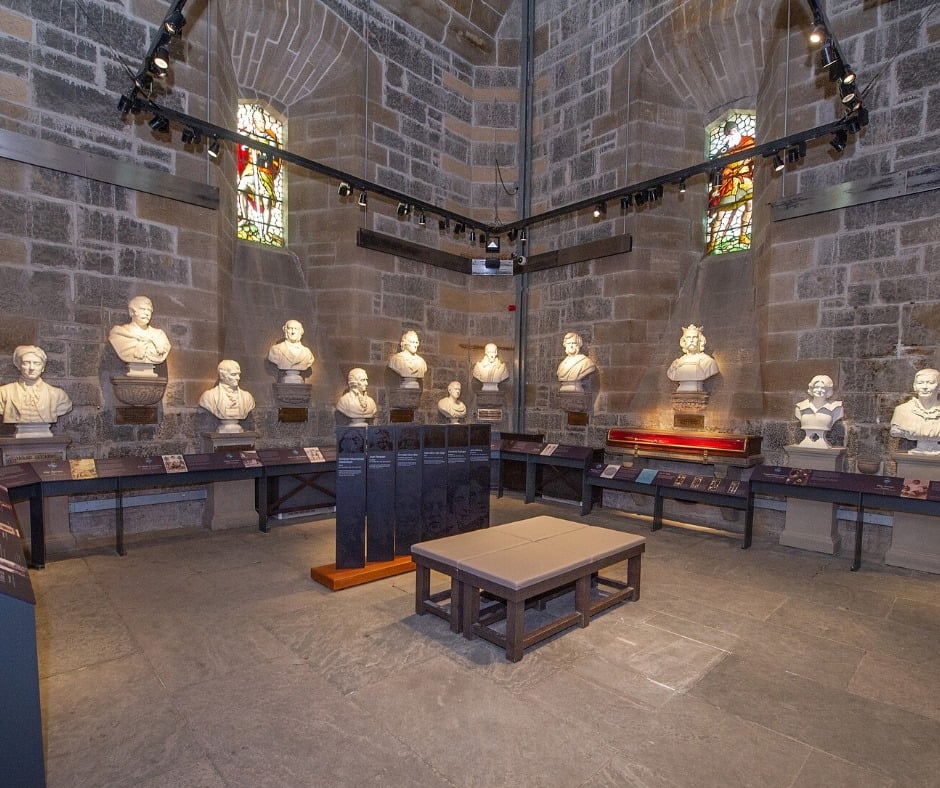
- Marble Busts: A series of marble statues of notable Scots, such as:
- Robert the Bruce: Known for his role in securing Scotland’s independence.
- John Knox: A leader of the Scottish Reformation.
- Adam Smith: The father of modern economics.
- Sir Walter Scott: A famous novelist and poet.
- James Watt: An inventor whose improvements to the steam engine were vital to the Industrial Revolution.
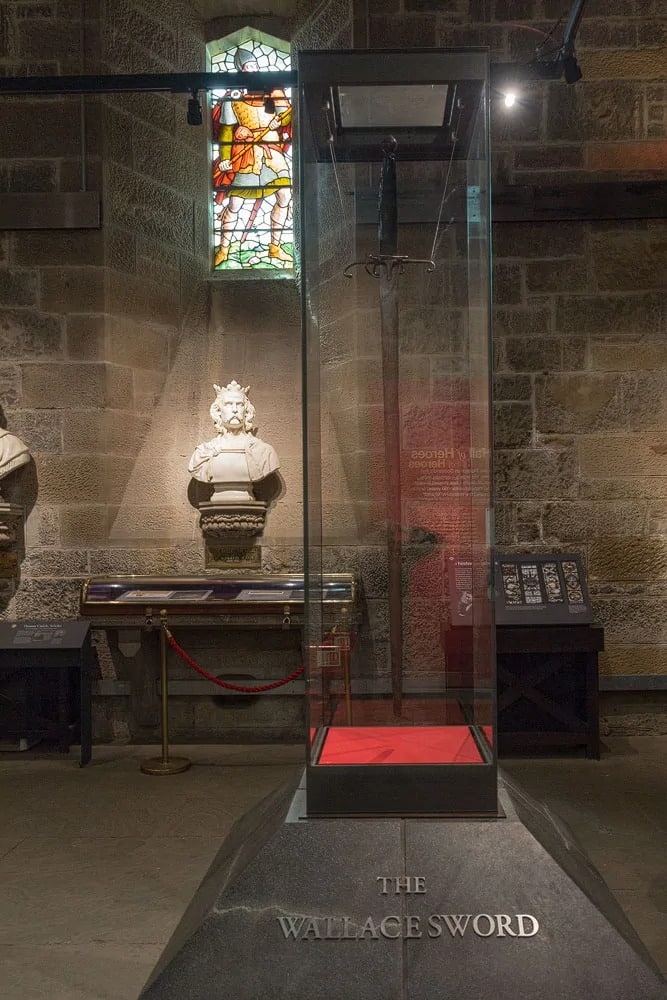
- Wallace Sword: The highlight of this room is the Wallace Sword, a massive 1.63-meter (5-foot 4-inch) longsword. This weapon, weighing almost three kilograms (seven pounds), is believed to have belonged to Wallace himself.
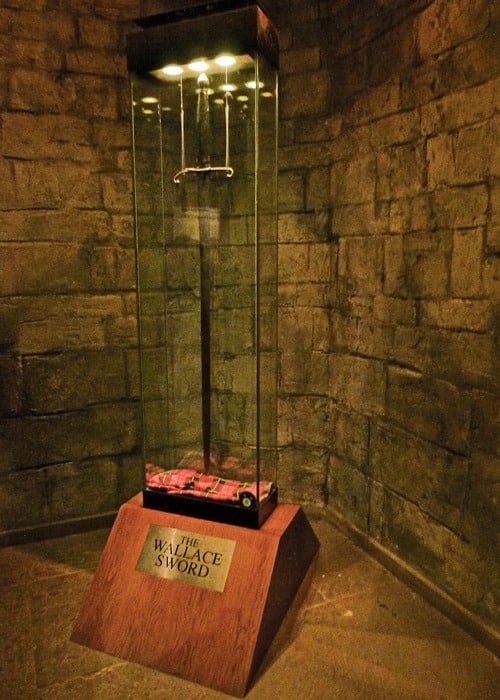
- Stained Glass Windows: Admire the eleven beautiful stained glass windows depicting scenes from Scottish history and notable figures.
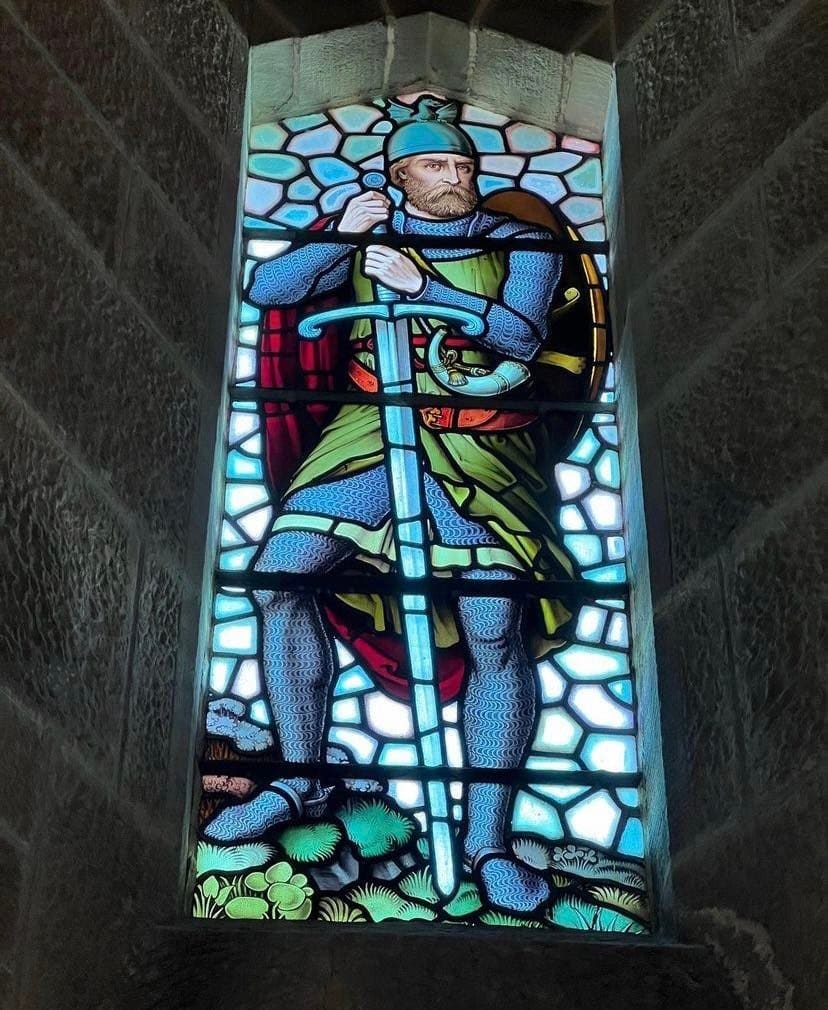
Royal Chamber
Ascending another 62 steps brings you to the Royal Chamber on the third level.
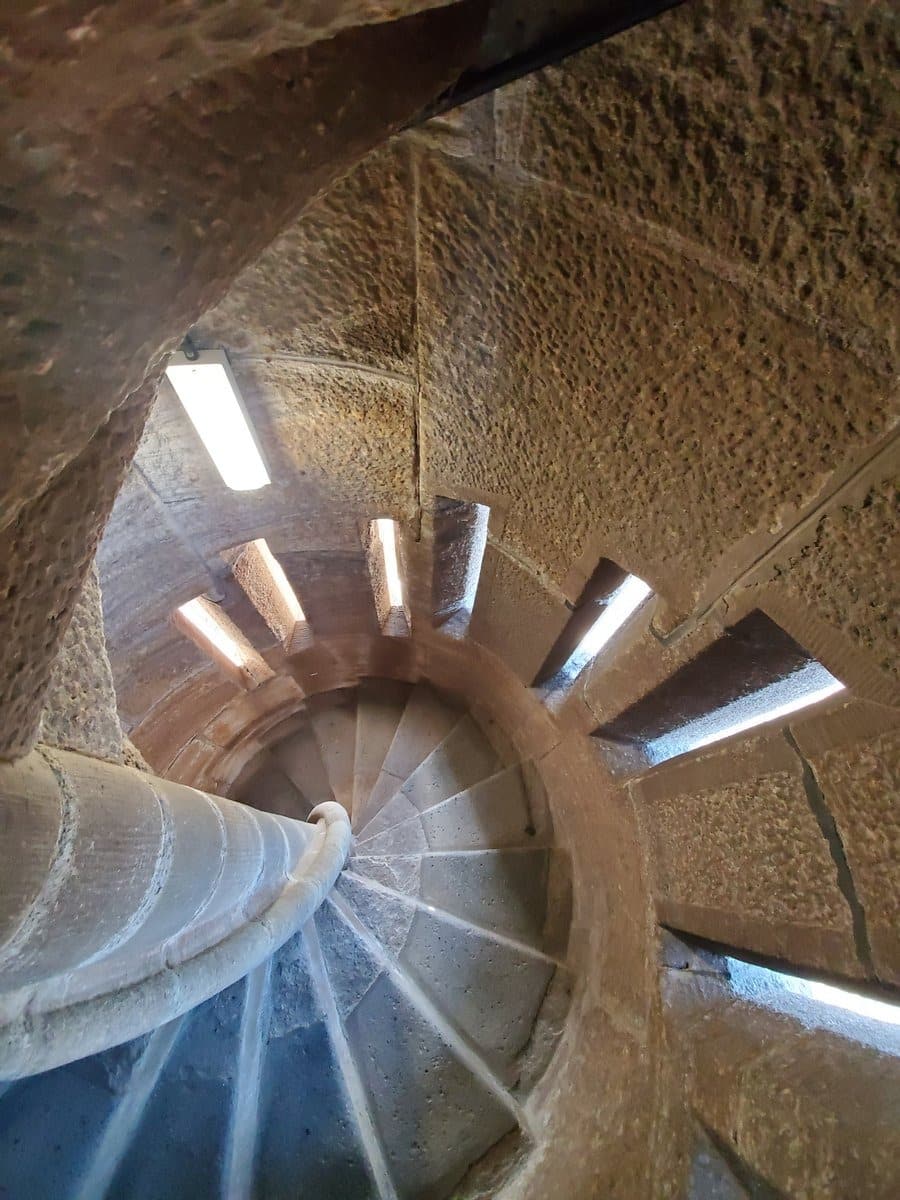
This room offers insights into the construction and significance of the monument itself:
- Illuminated Panels: Learn about the monument’s creation, from the initial fundraising campaign to its construction between 1861 and 1869.
- Architectural Details: Discover the story behind the design choices made by architect John Thomas Rochead, blending traditional Scottish tower house elements with a striking crown spire.
- Cultural Significance: Explore the broader context of 19th-century Scotland and the resurgence of national identity that inspired the monument’s creation.
At the top, visitors are rewarded with stunning views of the Ochil Hills and the Forth Valley. 
The Crown
Finally, after climbing a total of 246 steps, visitors reach the Crown of the monument. This observation platform offers breathtaking panoramic views:
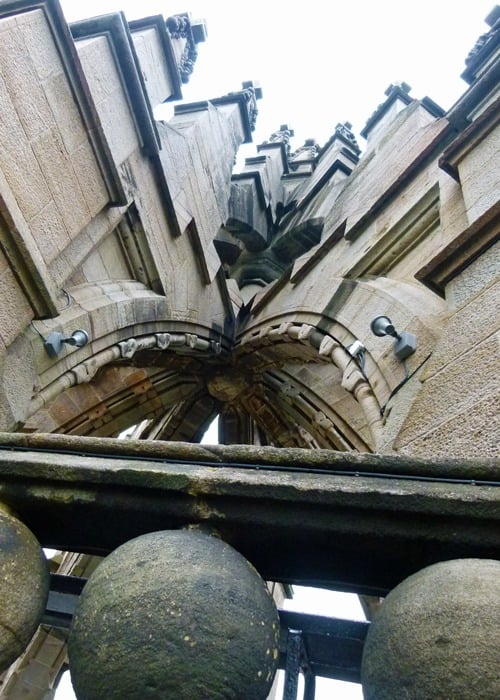
- Ochil Hills: Gaze northward to see the closest of the Ochil Hills, including Dumyat.
- Forth Valley: Look east to follow the winding River Forth as it snakes through the valley.
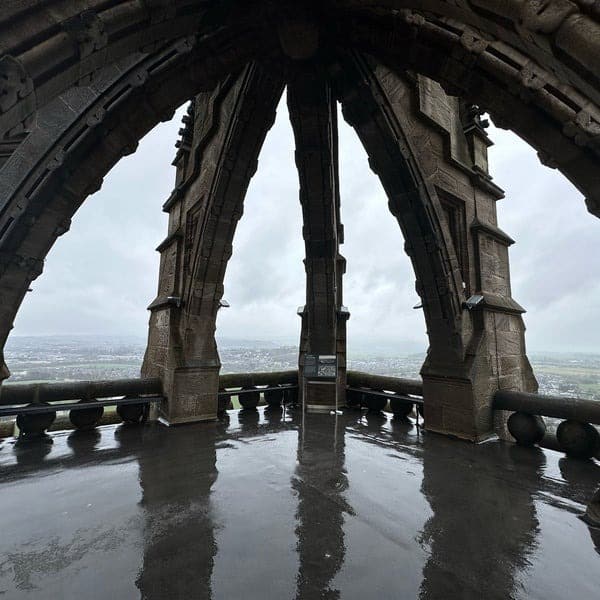
- Stirling: Enjoy views of the historic city, dominated by the majestic Stirling Castle to the south.
- Trossachs and Loch Lomond: On clear days, the westward view extends to the Trossachs and the peaks of the southern Highlands.
